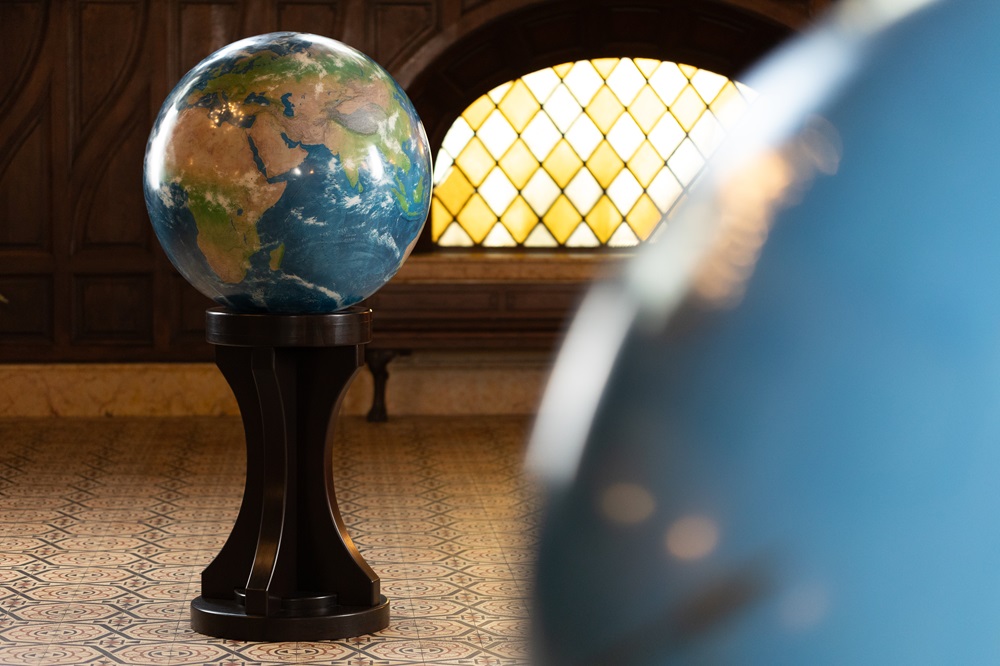Globes of the world are not just decorative pieces; they are windows to the world, encapsulating the beauty and diversity of our planet Earth. These spherical representations serve as invaluable educational tools, providing insights into geography, history, and culture. From ancient times to the modern era, globes have been cherished for their ability to spark curiosity and foster a deeper understanding of the world we inhabit. Join us on a captivating journey as we explore the wonders of globes of the world and unravel the stories they hold.
Historical Significance: The history of globes can be traced back to ancient civilizations, where early cartographers and astronomers crafted rudimentary spherical models to depict the Earth and celestial bodies. The Greeks and Romans were among the first to create terrestrial globes, using them for navigation, exploration, and astronomical studies. However, it was during the Age of Exploration in the 15th and 16th centuries that globes gained widespread popularity, as explorers and scholars sought to map the newly discovered lands and seas.
During the Renaissance period, advancements in cartography and printing technology led to the production of more accurate and detailed globes. Renowned cartographers such as Gerardus Mercator and Martin Behaim created elaborate globes that showcased the latest geographical discoveries and navigational routes. These globes became prized possessions among royalty, scholars, and merchants, symbolizing the spirit of exploration and discovery that characterized the Renaissance era.
Educational Tools: In the modern era, globes continue to play a vital role in education, offering students a tangible representation of the world's geography and topography. From classrooms to libraries, globes serve as interactive learning tools, allowing students to explore continents, oceans, and countries with ease. By rotating the globe and studying its features, students gain a deeper understanding of geographical concepts such as latitude, longitude, and the Earth's axial tilt.
Globes also provide valuable context for historical events, cultural phenomena, and geopolitical relationships. By examining the distribution of landmasses and the location of countries, students can better comprehend the factors that shape global politics, economics, and social dynamics. Additionally, globes facilitate discussions about environmental issues, climate patterns, and natural disasters, fostering environmental awareness and stewardship among future generations.
Cultural and Artistic Expressions: Beyond their educational utility, globes of the world are celebrated for their aesthetic appeal and artistic craftsmanship. Throughout history, artisans and craftsmen have adorned globes with intricate designs, decorative motifs, and ornate stands, transforming them into exquisite works of art. From Renaissance-era celestial globes embellished with elaborate constellations to contemporary designer globes featuring minimalist designs, these spherical masterpieces showcase the creativity and ingenuity of human expression.
Globes also serve as symbols of cultural identity and national pride, reflecting the rich heritage and diversity of different regions and civilizations. In many cultures, globes are cherished as heirlooms, passed down through generations as symbols of knowledge, wisdom, and exploration. Whether displayed in museums, libraries, or private collections, globes of the world continue to inspire awe and admiration, transcending time and space with their timeless beauty and universal appeal.
Technological Advancements: In recent years, technological advancements have revolutionized the design and functionality of globes, ushering in a new era of interactive and digital exploration. Modern globes are equipped with advanced features such as LED lighting, interactive touchscreens, and augmented reality capabilities, allowing users to explore the world in immersive and engaging ways. These innovative globes provide real-time updates on geographical data, weather patterns, and geopolitical developments, offering a dynamic and interactive learning experience for users of all ages.
Furthermore, digital globes enable users to customize their viewing experience, allowing them to zoom in on specific regions, overlay thematic maps, and access additional information about landmarks, cultures, and historical events. Whether used for educational purposes, leisure, or professional research, digital globes offer a wealth of opportunities for exploration and discovery in the digital age.
Conclusion: Globes of the world stand as timeless symbols of human curiosity, exploration, and imagination. From ancient civilizations to the modern era, globes have played a pivotal role in shaping our understanding of the Earth and its inhabitants. Whether crafted from traditional materials such as wood and paper or equipped with cutting-edge technology, globes continue to inspire wonder and fascination, serving as gateways to the wonders of our planet and the vastness of the cosmos. As we embark on our journey through geography and culture, let us celebrate the enduring legacy of globes of the world and the boundless possibilities they represent.





Comments